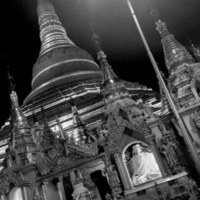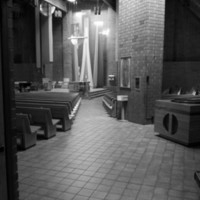Buddhist
In the 5th century BCE, an Indian prince named Siddhartha Gautama left his palace to become an ascetic after realizing the impermanence of the human condition. He then rejected both his princely life and his asceticism for the Middle Way and reached enlightenment, earning he name of the Buddha, meaning the "Awakened One." His profound understanding gained him followers and formed a community of monks, nuns, and lay followers, cumulatively called the sangha, whom he taught to overcome suffering. The Buddha's teachings, called Dharma, center around the Four Noble Truths, namely that the endless cycle of death and rebirth (samsara) involves suffering (duhkha), that duhkha is caused by desire (tanha), that there is a way to end duhkha, and that this way is the Noble Eightfold Path. This path outlines correct behavior, thought, and meditations, in terms of right understanding, intention, speech, action, livelihood, effort, mindfulness, and concentration. Buddhism holds that there have been many Buddhas through the millennia; a Buddha is simply one who awakens to the Four Noble Truths and achieves enlightenment.
Buddhism is dominated by two main branches: Theravada and Mahayana. Theravada, or "way of the elders," is rooted in southeast Asia and emphasizes Buddhist writings and scripture in the ancient Pali language (as opposed to Sanskrit), venerating Gautama Buddha and arahants, or "worthy ones" who have achieved enlightenment and nibbana, or nirvana. Mahayana, or "great vehicle," is rooted in eastern Asia is more flexible in its scriptural canon and broader in its interpretations and audience. It is concerned with developing bodhisattvas, an enlightened one who helps others overcome suffering, rather than arahants. Theravada Buddhism became popular in the U.S. in the 1960s as Americans practiced vipassana, or insight meditation. Mahayana Buddhism became popular earlier with the arrival of Chinese and Japanese immigrants in the 1800s. Other popular forms of Buddhism in America include Zen and Vajrayana. For more information, please visit The Pluralism Project website's pages on Buddhism.
Minnesota is home to about 10,000 Cambodians, who are largely Theravada Buddhist and part of the Khmer ethnic group. About 75 percent live in the Twin Cities. They fled forced migration to rural work camps and genocide in Cambodia in the 1970s under the communist regime of Pol Pot and the Khmer Rouge, which took over the country in 1975 as communism swept over southeast Asia. About 2 to 3 million Cambodians were killed, and Buddhist monks and intellectuals were specifically targeted. Cambodia had also been invaded and bombed during the Vietnam War. Many Khmer escaped to refugee camps in Thailand and lived under horrible conditions for years. The U.S. began accepting Cambodians in 1979, when Pol Pot was overthrown. While many Khmer in Minnesota are relatively well-off economically, poverty and educational achievement remain as difficult issues, influenced by language barriers and the fact that many refugees were not literate or educated in Cambodia. The trauma of the Khmer Rouge's reign is linked to mental health issues like PTSD and depression. The Minnesota Cambodia Buddhist Society, founded in 1982, finished construction on Watt Munisotaram, North America's largest Buddhist temple, in Hampton in 2007. The temple exhibits traditional Cambodian Buddhist architecture and serves as a place for Minnesota Cambodians to gather to celebrate their spirituality, language, culture, and achievements.
Watt Munisotaram

Watt Munisotaram is a Cambodian Buddhist temple in Hampton, Minnesota, about thirty minutes south of the Twin Cities and just...
Chùa Phât-Ân Temple

Phat-An Temple rises from the suburban landscape of Roseville, Minnesota as an expanse of red and yellow, a complex of...
Theravada Dhamma Society of America

A Theravada Buddhist Center in Chisago City, supported by the Theravada Dhamma Society of America founded by Ashin Dr. Nyanissara.
Unpublished Exhibits
Minnesota Zen Meditation Center (MZMC)

The Minnesota Zen Meditation Center is located in the East Lake neighborhood of Southwest Minneapolis, located near lake Bde Maka...
Buddhism

A brief overview of the history of Buddhism in Minnesota.
Listen to Minnesota Religions


